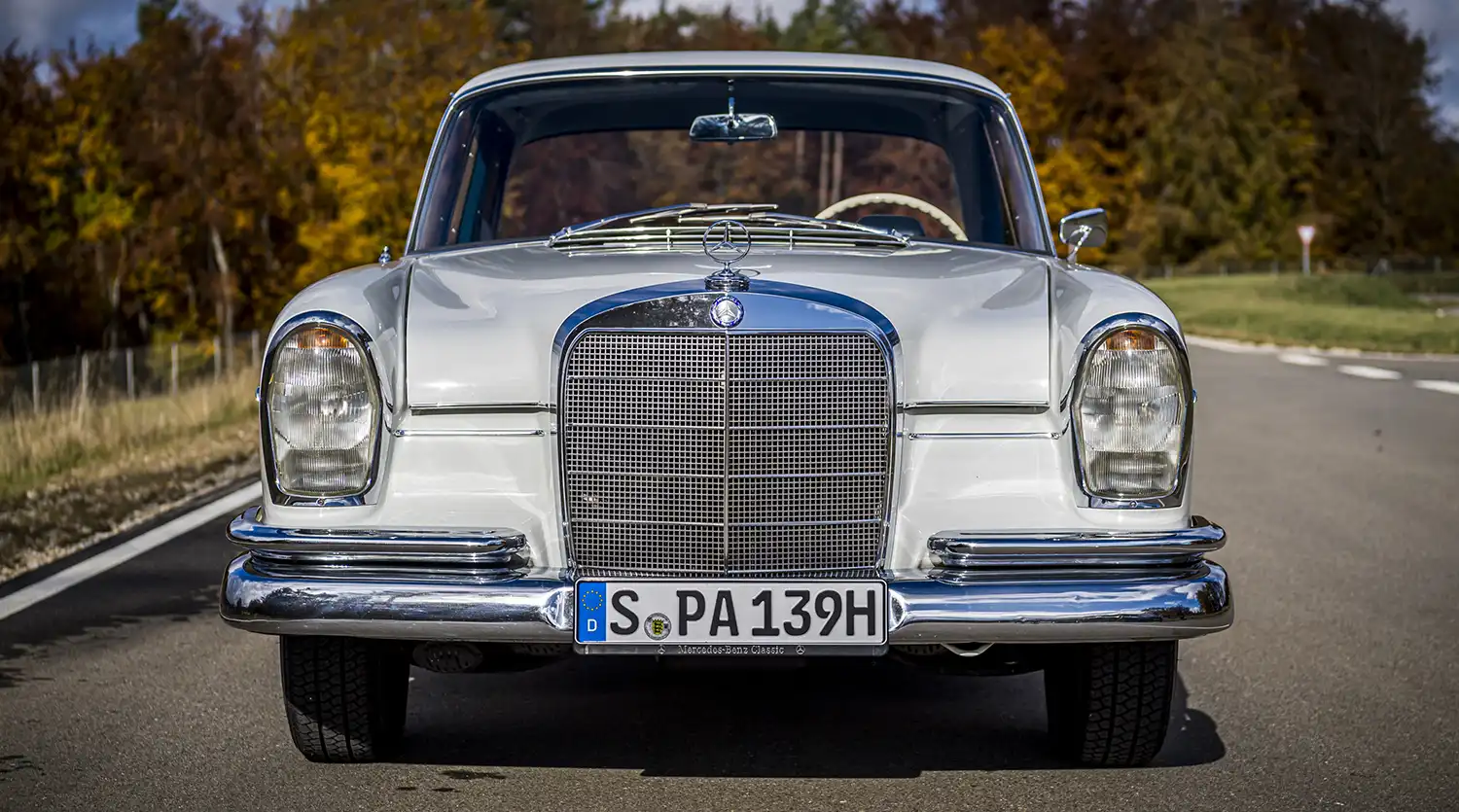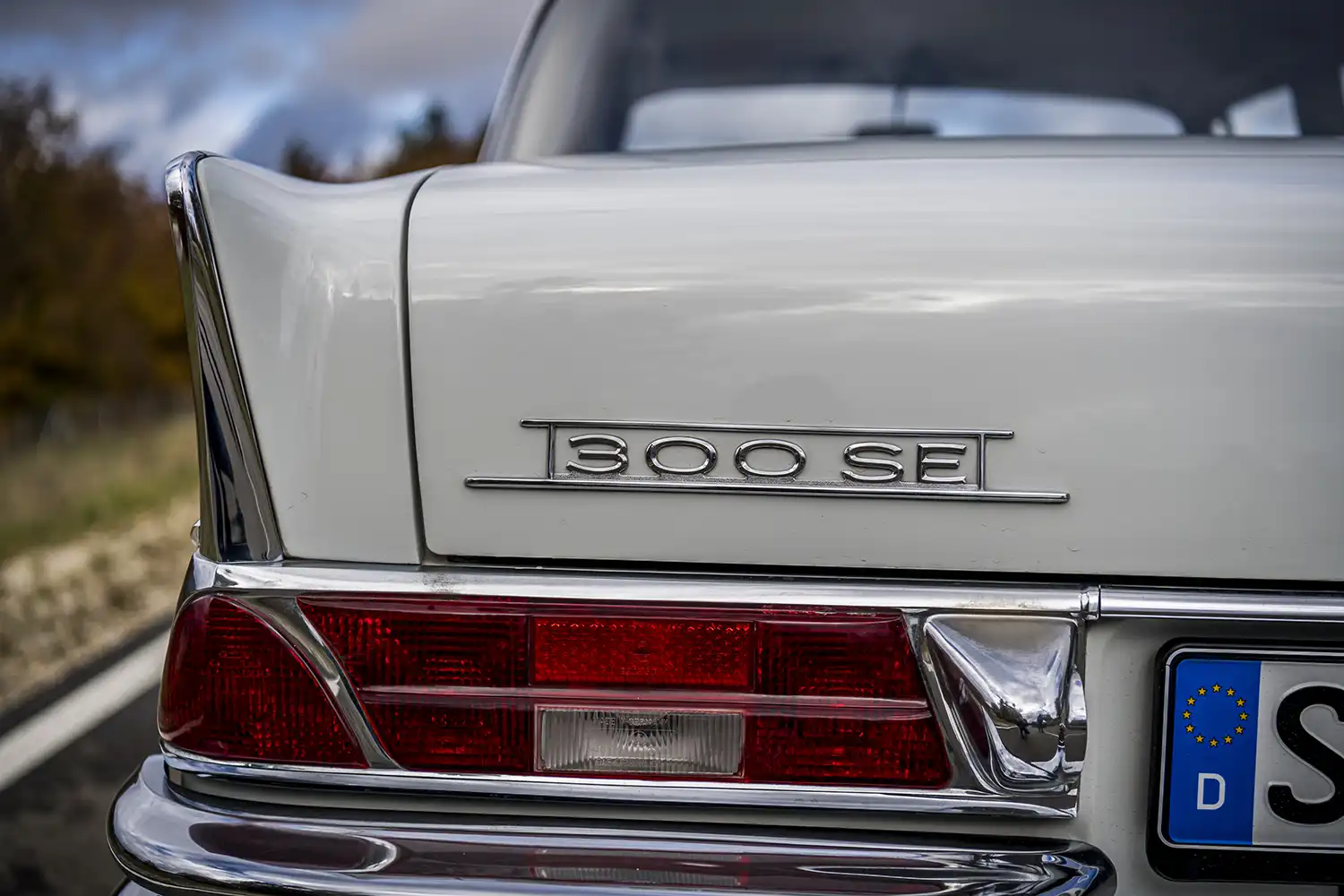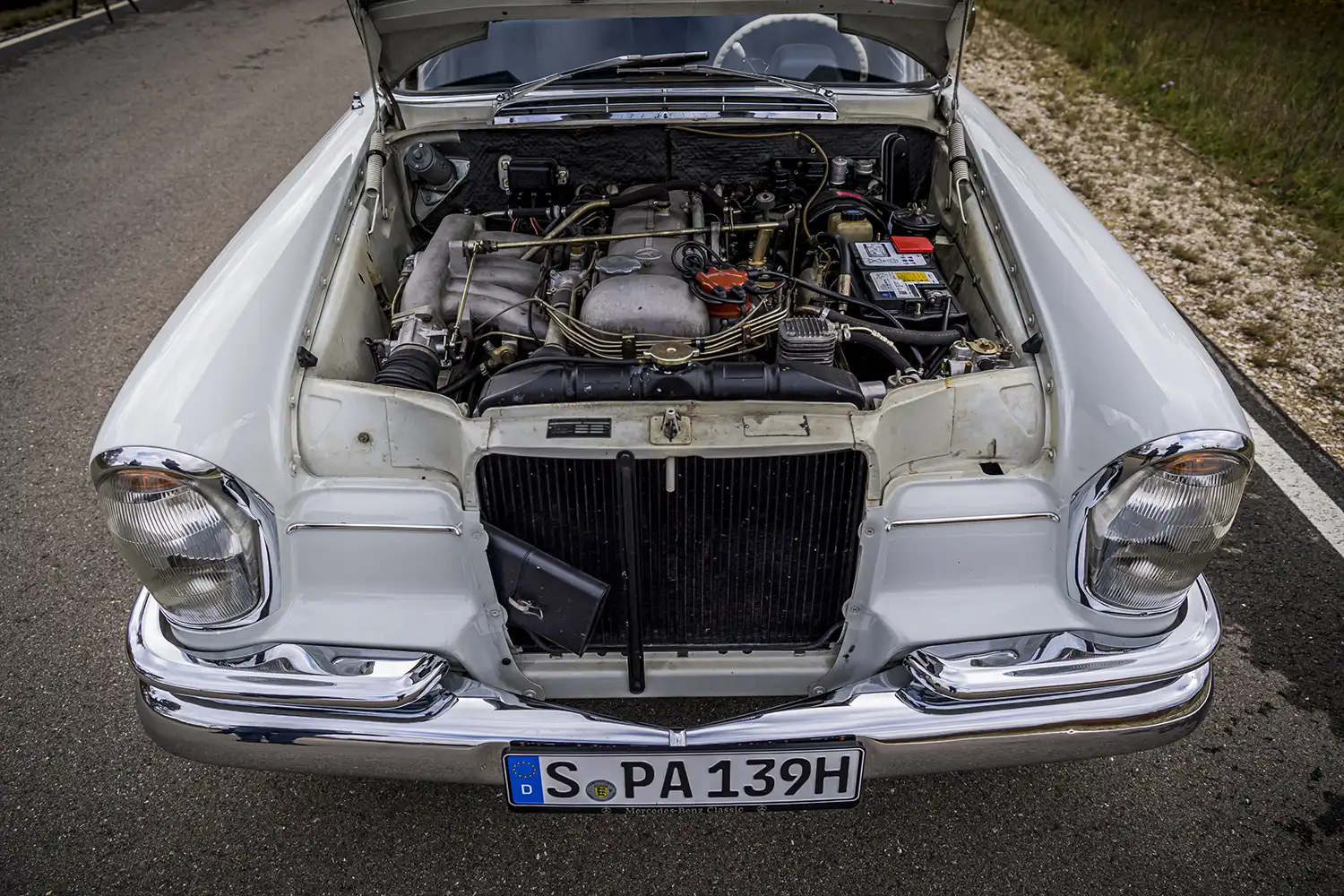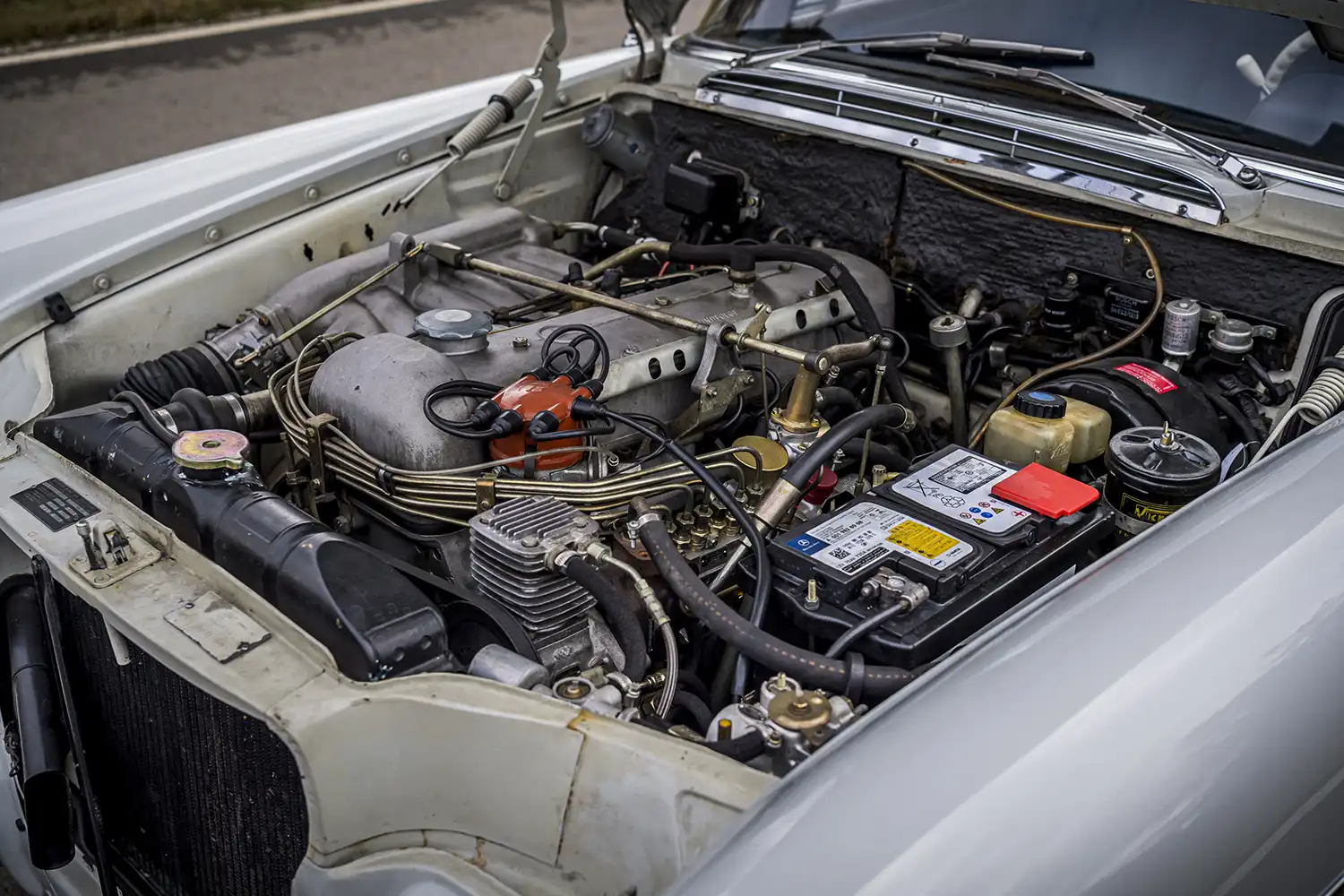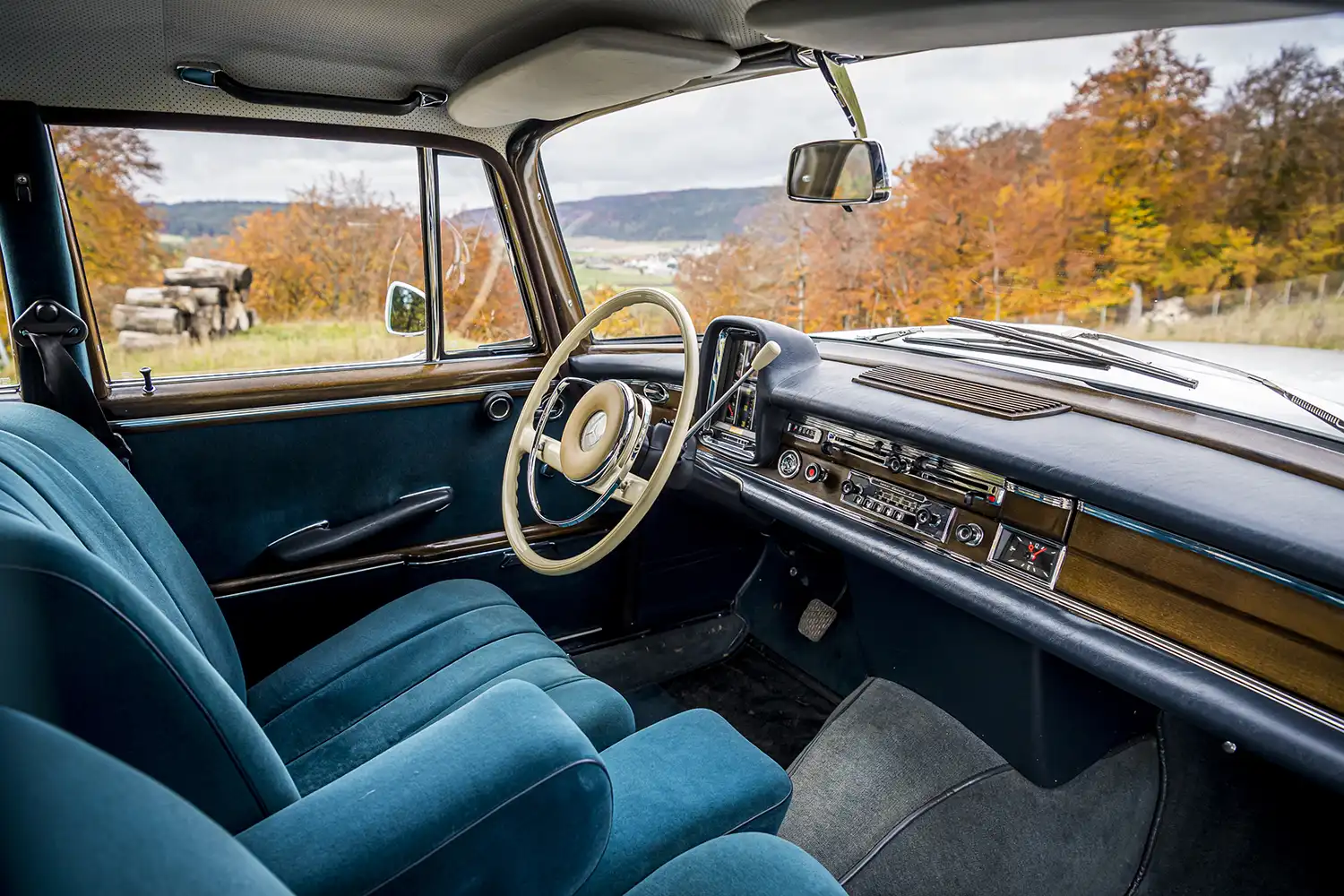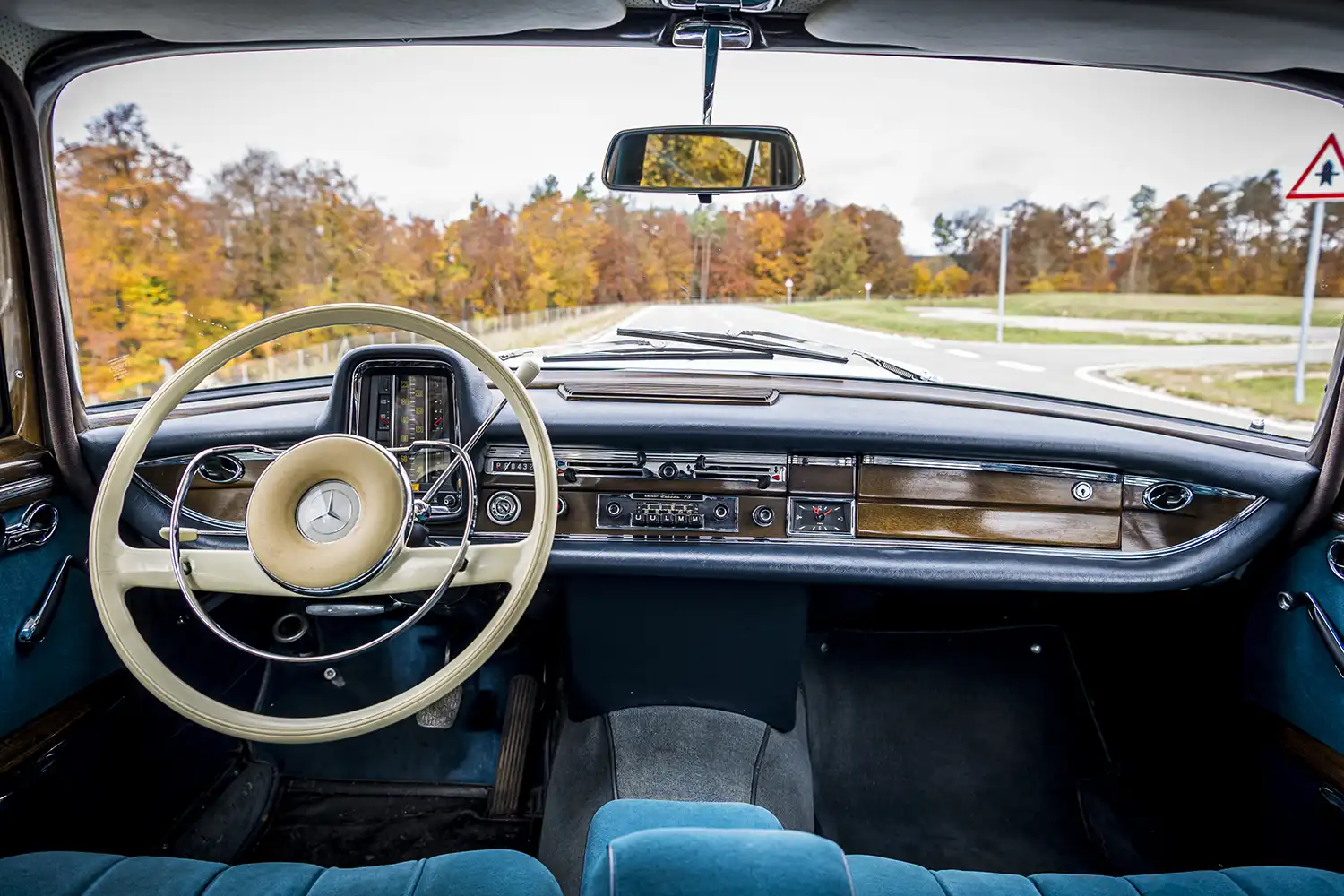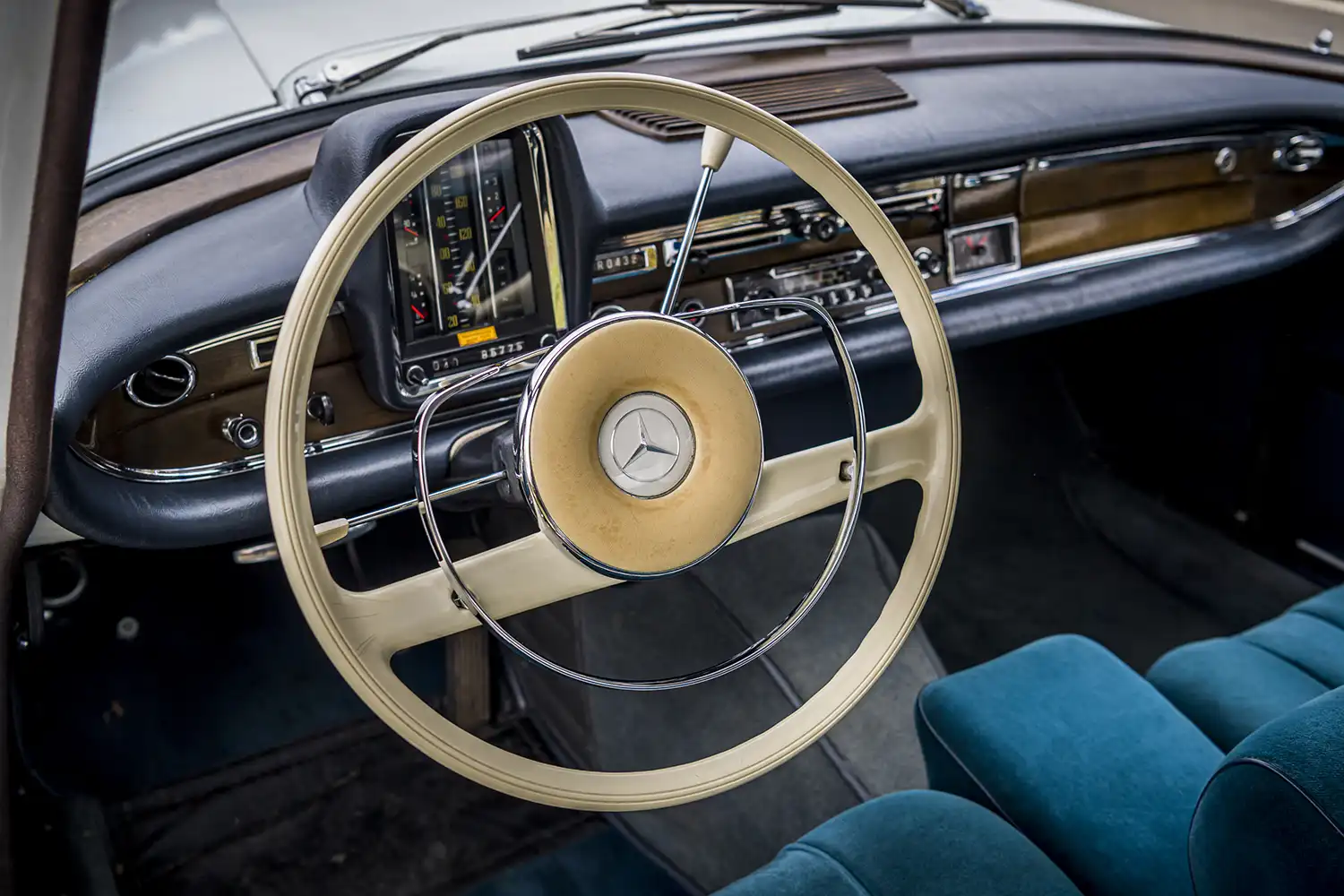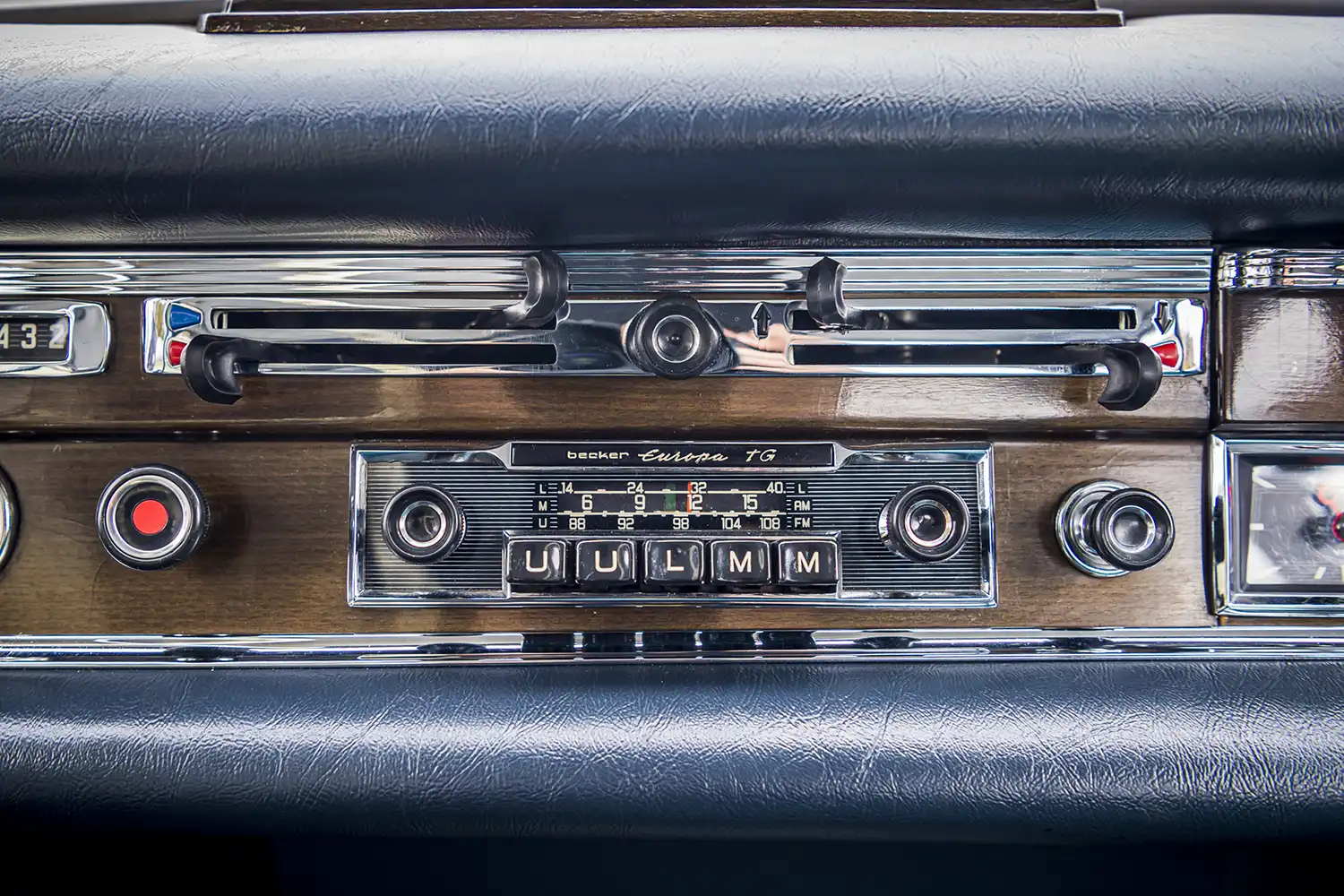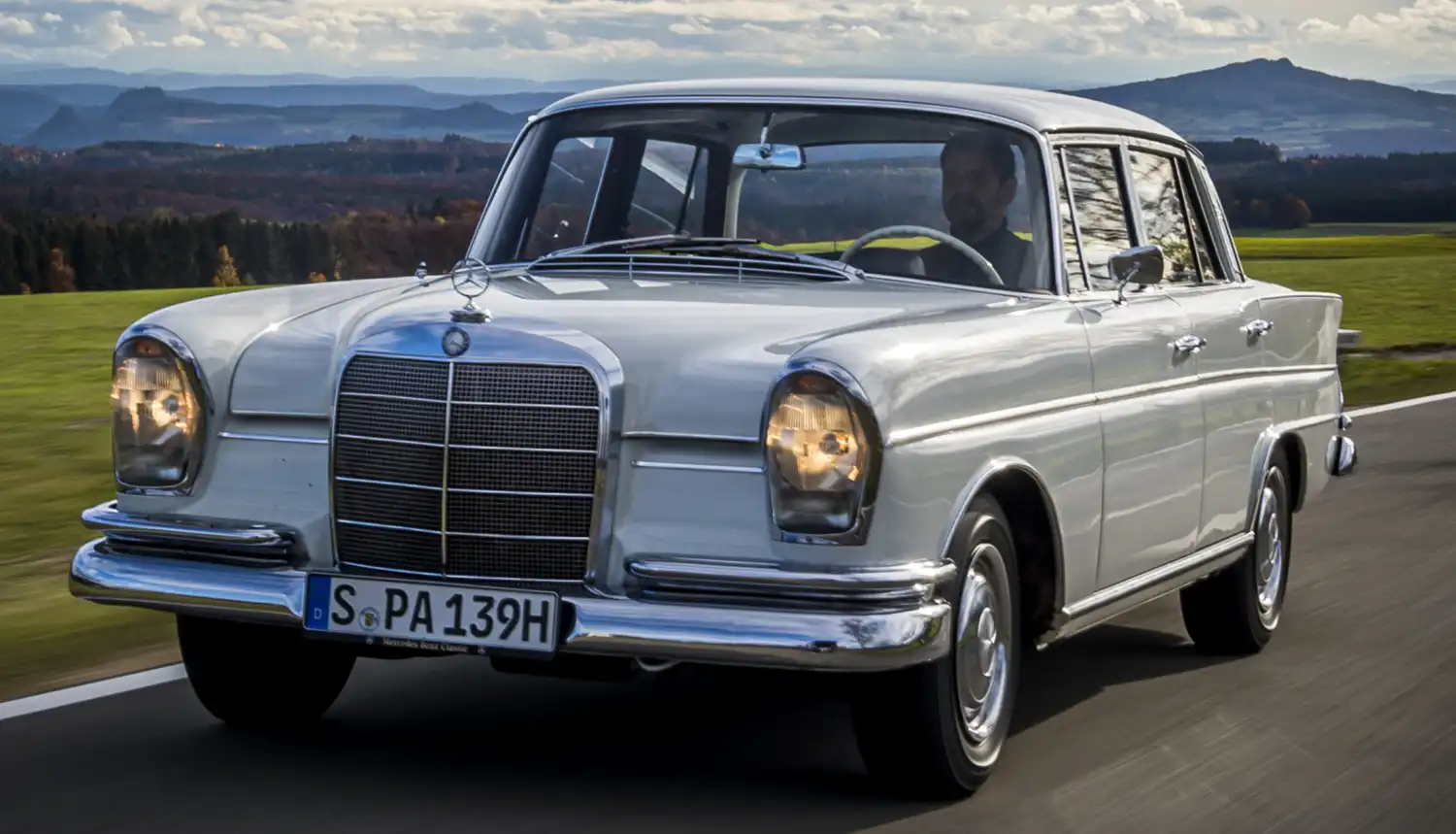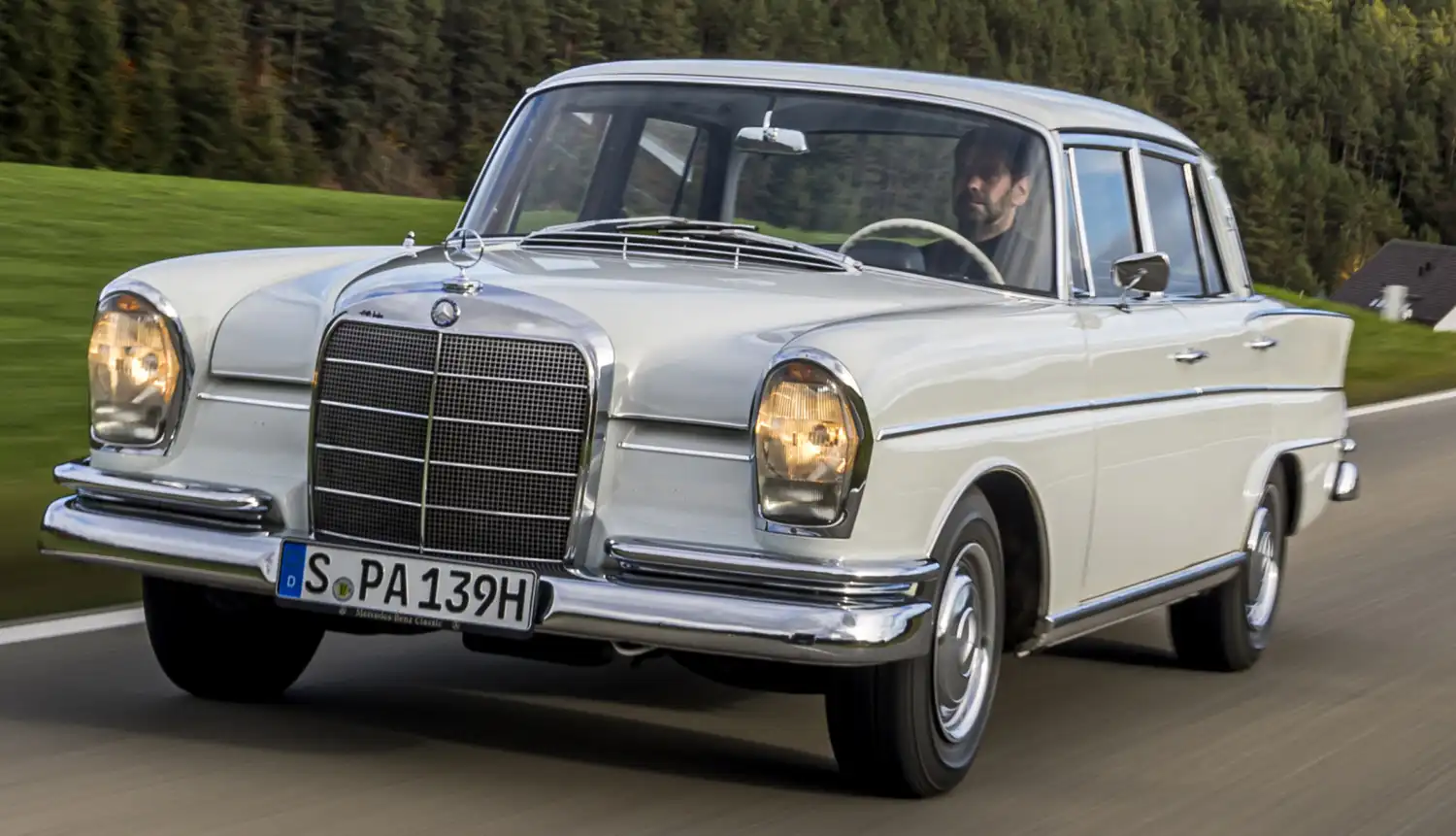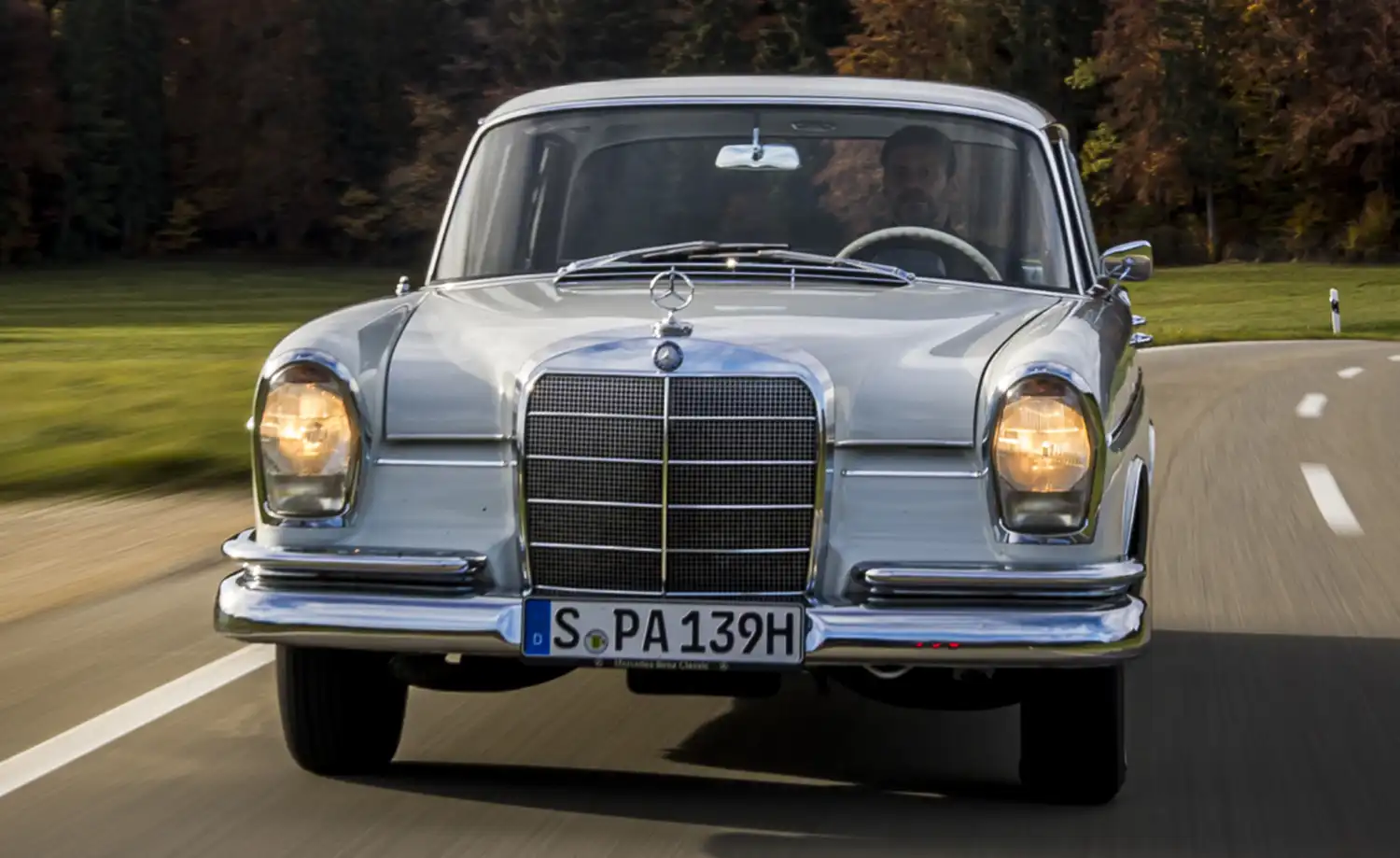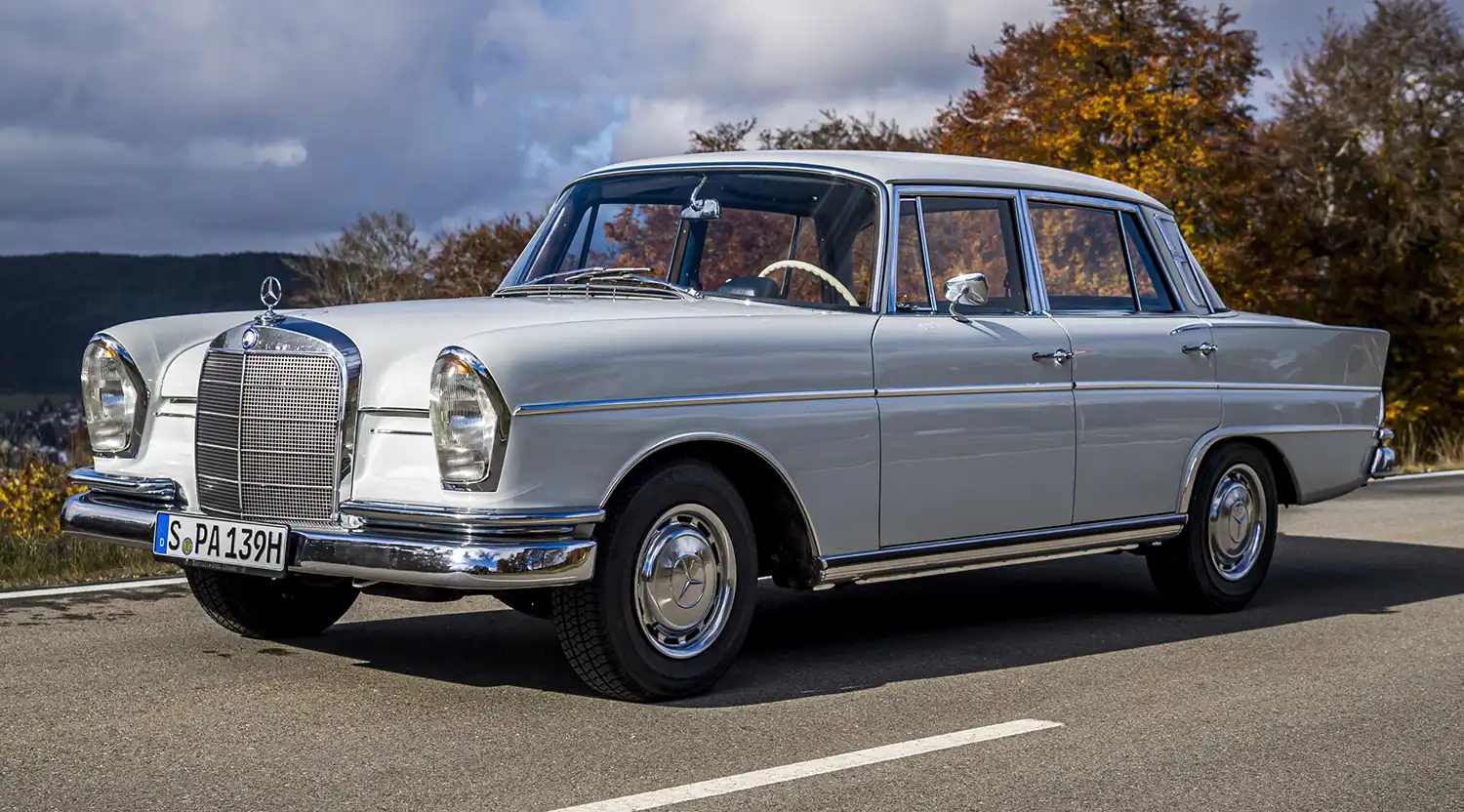
The Mercedes-Benz 300 SE, part of the W 112 series produced from 1961 to 1967, represented the zenith of luxury and technological sophistication within the “Tailfin” (Heckflosse) era of Mercedes-Benz. Introduced as a more exclusive and technologically advanced counterpart to the W 111 series, the 300 SE retained the distinctive tailfin styling but elevated the driving experience through the inclusion of standard air suspension, a more powerful engine, and a host of premium features. Its arrival underscored Mercedes-Benz’s commitment to building world-class automobiles that offered unparalleled comfort, performance, and prestige. This article explores the history, design, engineering advancements, and enduring legacy of the distinguished Mercedes-Benz 300 SE “Tailfin” (W 112).
The Luxurious Sibling of the “Tailfin” Family: Following the successful introduction of the W 111 series in 1959, Mercedes-Benz sought to offer an even more luxurious and technologically advanced model within the same distinctive design language. The result was the W 112 series, launched in 1961, exclusively featuring the 300 SE designation. While sharing the W 111’s basic body shell and the now-iconic “tailfin” styling, the 300 SE was positioned as the flagship of the Mercedes-Benz passenger car range at the time. Its introduction catered to discerning buyers who demanded the ultimate in comfort, performance, and exclusivity, further solidifying Mercedes-Benz’s reputation for producing some of the world’s finest automobiles.
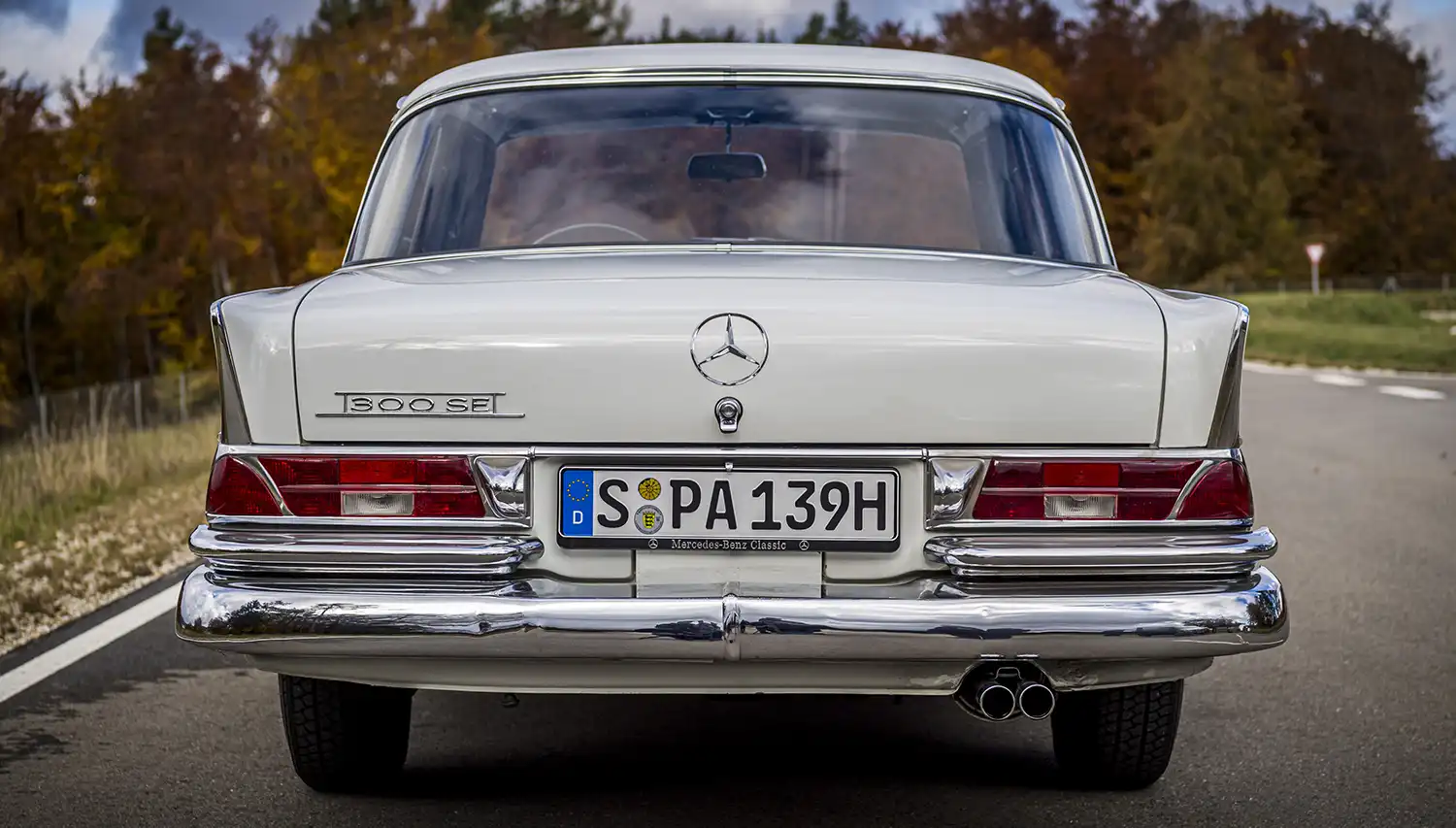
Elegant Design with Enhanced Chrome Accents: The exterior design of the Mercedes-Benz 300 SE echoed the elegant lines of the W 111 series, characterized by its low waistline, expansive windows, and the signature subtle tailfins integrated into the rear fenders. However, the 300 SE distinguished itself through the liberal use of brightwork, emphasizing its premium status. Additional chrome trim adorned the window surrounds, door frames, and lower body panels, creating a more opulent and visually striking appearance compared to its W 111 siblings. The prominent Mercedes-Benz grille, featuring the iconic three-pointed star, further reinforced its luxurious identity. The overall design exuded a sense of understated grandeur and timeless sophistication, befitting its position at the top of the Mercedes-Benz model hierarchy.
Pioneering Air Suspension and Advanced Features: The most significant engineering advancement that set the 300 SE apart from the W 111 series was its standard air suspension system. This innovative technology provided an exceptionally smooth and comfortable ride, automatically adjusting the ride to maintain a level stance regardless of passenger load or road conditions. This was a groundbreaking feature for its time and contributed significantly to the 300 SE’s luxurious driving experience. Furthermore, the 300 SE came equipped with power steering and an automatic transmission as standard or very common options, further enhancing driver comfort and ease of operation. The interior was lavishly appointed with high-quality materials, including rich wood veneers, supple leather upholstery, and plush carpeting, creating an opulent and inviting cabin for both the driver and passengers.

Refined Power from a Larger Inline-Six: Engine and Performance: The Mercedes-Benz 300 SE was powered by a larger and more potent 3.0-liter inline six-cylinder engine (M189) compared to the 2.2-liter units found in the W 111 220 SE. This naturally aspirated engine featured overhead camshafts and Bosch mechanical fuel injection, delivering approximately 160 to 170 horsepower (depending on the specific year and market). This increased power output provided the 300 SE with enhanced performance, allowing for effortless acceleration and comfortable high-speed cruising. The smooth and responsive nature of the fuel-injected six-cylinder engine perfectly complemented the luxurious character of the car. The standard or readily available automatic transmission ensured smooth and seamless gear changes, further contributing to the refined driving experience. The 300 SE offered a compelling blend of power, smoothness, and sophistication that was unmatched by most cars of its era.
Unparalleled Comfort and Luxurious Appointments: The Mercedes-Benz 300 SE was meticulously crafted to provide an unparalleled level of comfort and luxury. The standard air suspension effectively isolated the cabin from road imperfections, delivering a remarkably smooth and serene ride. The spacious interior offered ample legroom and headroom for all occupants, and the meticulously crafted seats provided exceptional support for long journeys. The use of premium materials throughout the cabin, including finely polished wood trim and high-grade leather, created an atmosphere of refined elegance. Features such as power windows, central locking, and optional air conditioning further enhanced the convenience and comfort for passengers. The 300 SE was truly designed as a luxurious sanctuary on wheels, catering to the most discerning clientele.
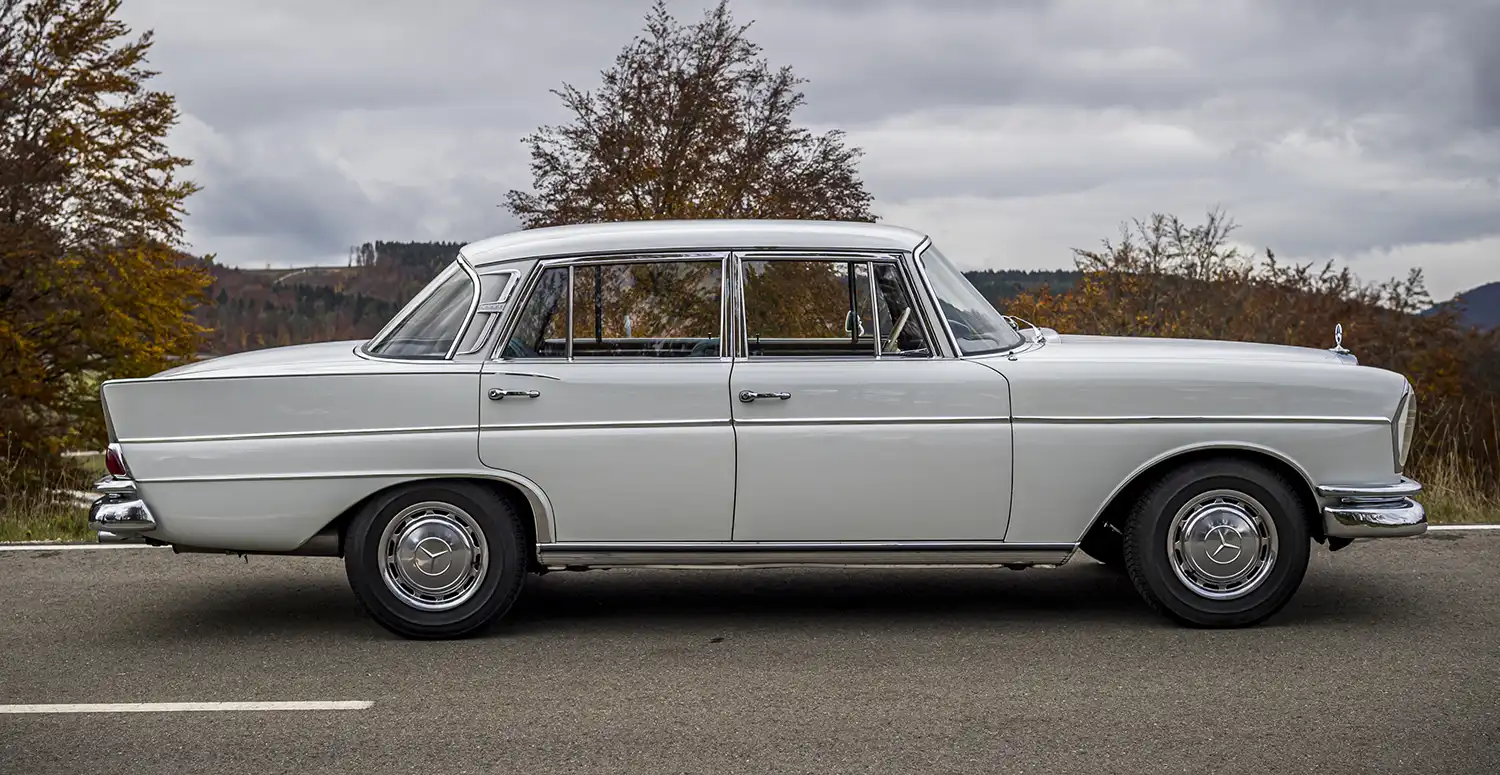
A Symbol of Prestige and Technological Leadership: The Mercedes-Benz 300 SE “Tailfin” quickly established itself as a symbol of prestige, success, and technological leadership. Its combination of distinctive styling, innovative air suspension, powerful engine, and luxurious appointments made it the vehicle of choice for dignitaries, business tycoons, and anyone who appreciated the finest in automotive engineering and craftsmanship. The 300 SE represented the pinnacle of Mercedes-Benz’s engineering prowess during the “Tailfin” era, showcasing the brand’s unwavering commitment to quality, innovation, and uncompromising luxury. Its presence commanded respect and admiration, solidifying its status as a true automotive icon.
Enduring Legacy and High Collectibility: The Mercedes-Benz 300 SE “Tailfin” (W 112) holds a significant place in automotive history as a landmark vehicle that exemplified luxury and technological innovation in the 1960s. Its pioneering air suspension, powerful fuel-injected engine, and opulent appointments set a new standard for premium automobiles. Today, the 300 SE is highly prized by classic car collectors and enthusiasts who appreciate its timeless elegance, its advanced engineering for its era, and its historical significance as the flagship of the “Tailfin” Mercedes-Benz range. Well-preserved or meticulously restored examples, particularly those with desirable options and in excellent condition, command high values in the classic car market, a testament to their enduring appeal and status as true automotive icons.
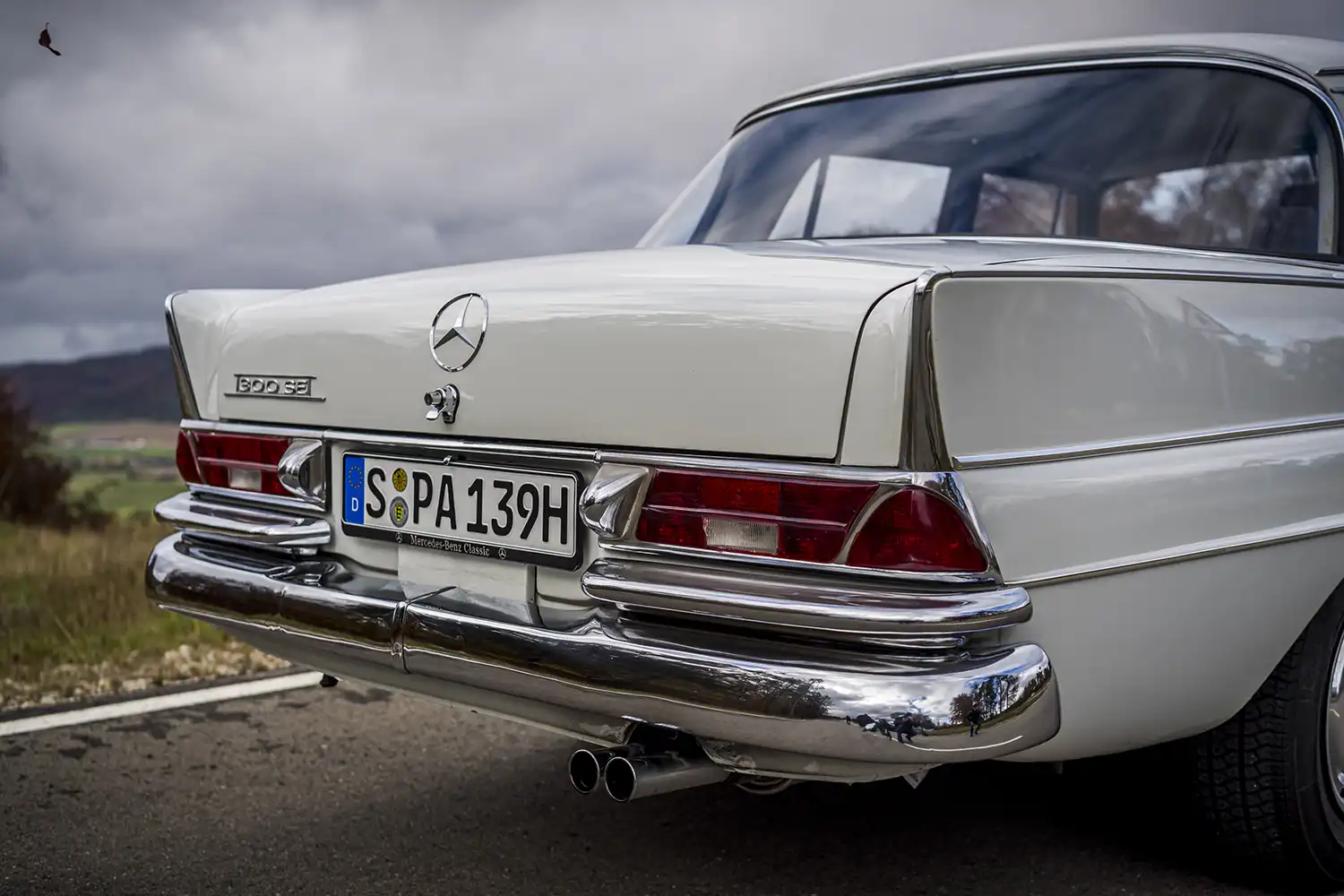
Summary:
- Mercedes-Benz 300 SE (W 112) was the luxurious and technologically advanced “Tailfin” model (1961-1967).
- Standard air suspension provided an exceptionally smooth ride.
- Powered by a larger 3.0-liter fuel-injected inline-six engine (M189).
- Featured enhanced chrome trim and luxurious interior appointments.
- Standard or readily available power steering and automatic transmission.
- Represented the pinnacle of luxury and prestige within the Mercedes-Benz range.
- Remains a highly collectible classic car valued for its innovation and elegance.
Disclaimer: Technical specifications and standard equipment may vary depending on the specific production year and market. The air suspension system, while advanced for its time, requires specialized maintenance in modern times.
Photos Source : Mercedes-Benz
This article was crafted with assistance from Gemini
